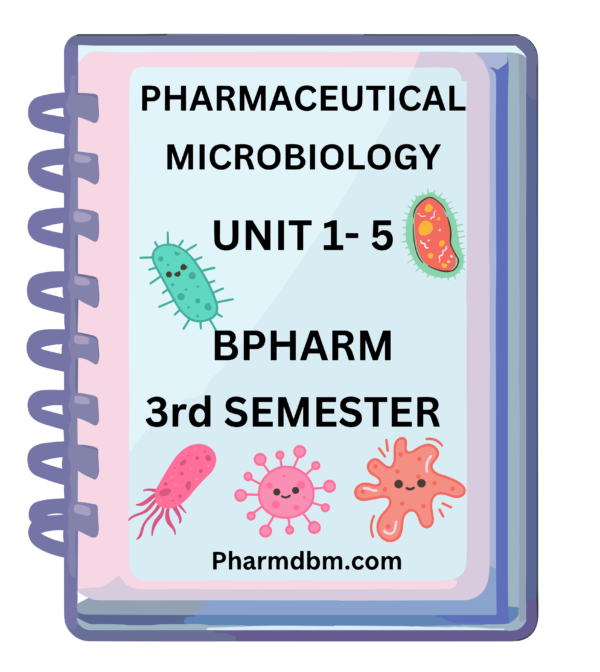
Free Download Pharmaceutical Microbiology Notes in pdf – Bpharm 3rd Semester. High quality, well-structured and Standard Notes that are easy to remember.
Welcome to Pharmdbm.com
Pharmdbm provides standard or well-structured Notes for Bpharm students. The notes are free to download. Each semester notes of Bpharm are available on www.pharmdbm.com.
In this post you can download notes of Pharmaceutical Microbiology (BP303T). All units are available to download for free.
Pharmaceutical Microbiology Notes Unit 1 – 5
UNIT – 1
Introduction and History, Prokaryotes & Eukaryotes, Culture Media, Bacteria, Microscopes

UNIT – 2
Staining, Sterilization, Sterility Evaluation
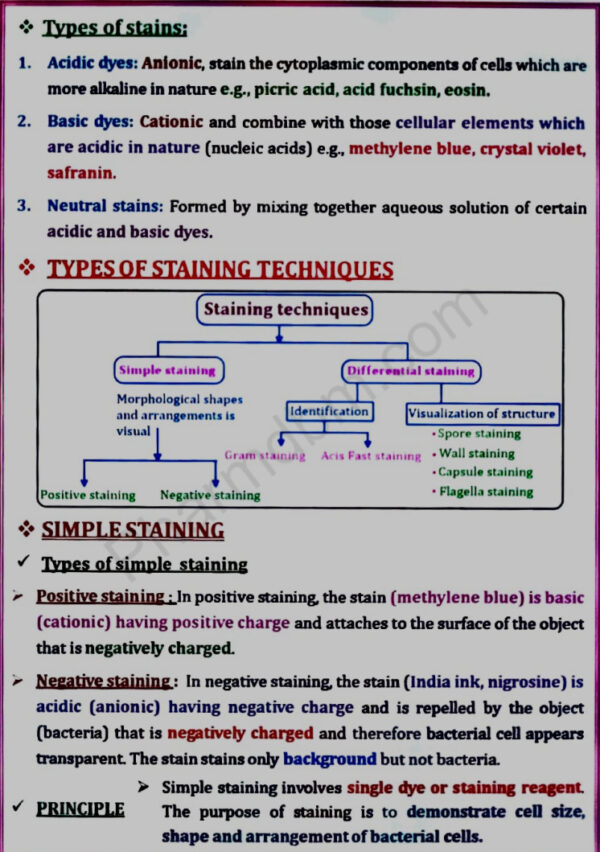
UNIT – 3
Fungi and Viruses, Disinfectants, Evaluation and Sterility Testing
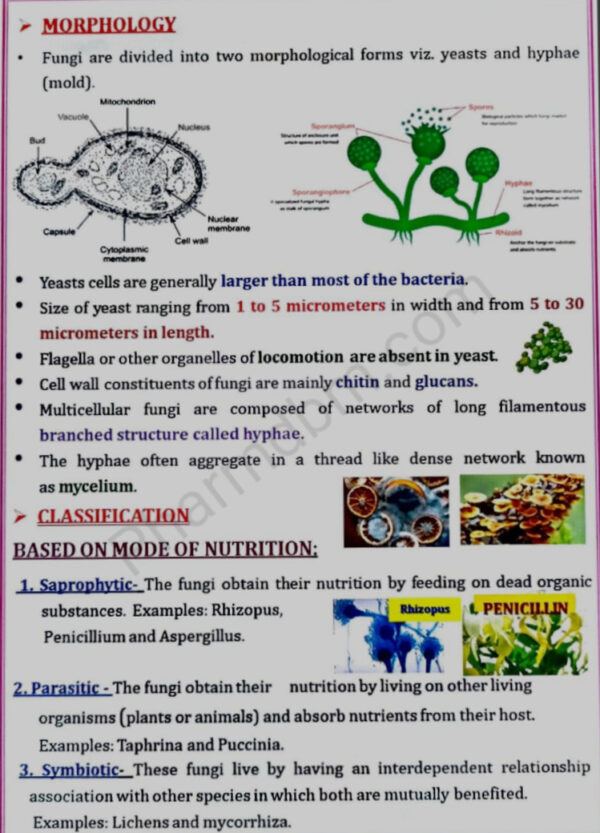
UNIT – 4
Instrumentation (Aseptic area & Laminar air flow), Microbiological Assay
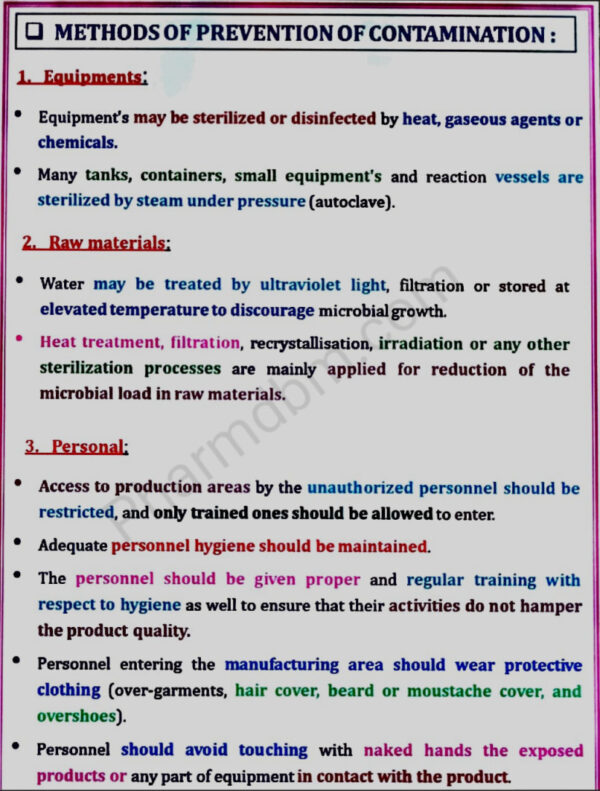
UNIT – 5
Introduction & Types of Spoilage, Preservation of Pharmaceutical Products Using Antimicrobial Agents
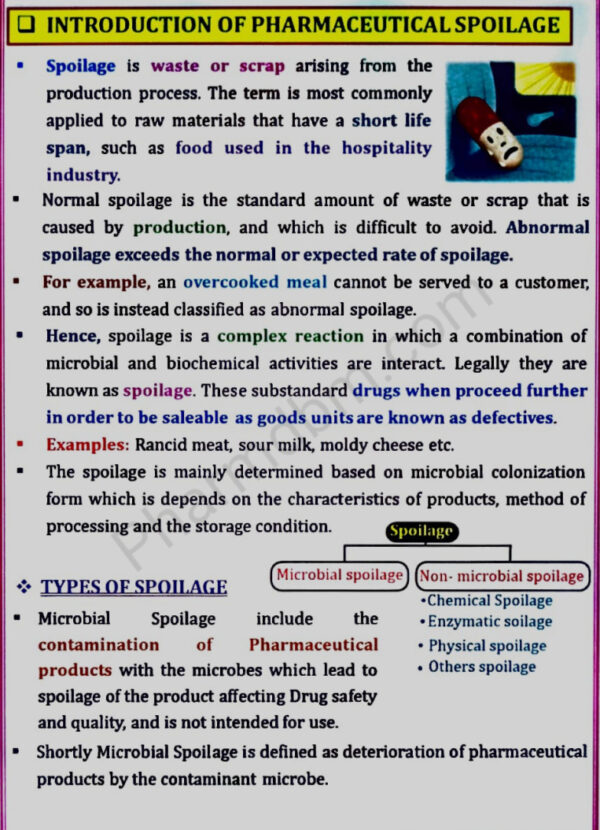
Syllabus of Pharmaceutical Microbiology
UNIT – 1
Introduction, history of microbiology, its branches, scope and its
importance. Introduction to Prokaryotes and Eukaryotes
Study of ultra-structure and morphological classification of bacteria,
nutritional requirements, raw materials used for culture media and physical
parameters for growth, growth curve, isolation and preservation methods
for pure cultures, cultivation of anaerobes, quantitative measurement of
bacterial growth (total & viable count).
Study of different types of phase constrast microscopy, dark field
microscopy and electron microscopy.
UNIT – 2
Identification of bacteria using staining techniques (simple, Gram’s &Acid
fast staining) and biochemical tests (IMViC).
Study of principle, procedure, merits, demerits and applications of physical,
chemical gaseous,radiation and mechanical method of sterilization.
Evaluation of the efficiency of sterilization methods.
Equipments employed in large scale sterilization.
Sterility indicators
UNIT – 3
Study of morphology, classification, reproduction/replication and
cultivation of Fungi and Viruses.
Classification and mode of action of disinfectants
Factors influencing disinfection, antiseptics and their evaluation. For
bacteriostatic and bactericidal actions
Evaluation of bactericidal & Bacteriostatic.
Sterility testing of products (solids, liquids, ophthalmic and other sterile
products) according to IP, BP and USP
UNIT – 4
Designing of aseptic area, laminar flow equipments; study of different
sources of contamination in an aseptic area and methods of prevention,
clean area classification.
Principles and methods of different microbiological assay. Methods for
standardization of antibiotics, vitamins and amino acids.
Assessment of a new antibiotic.
UNIT – 5
Types of spoilage, factors affecting the microbial spoilage of
pharmaceutical products, sources and types of microbial contaminants,
assessment of microbial contamination and spoilage. Preservation of pharmaceutical products using antimicrobial agents,
evaluation of microbial stability of formulations.
Growth of animal cells in culture, general procedure for cell culture, Primary, established and transformed cell cultures.
Application of cell cultures in pharmaceutical industry and research.
Scope of Pharmaceutical Microbiology
Study of all categories of microorganisims especially for the production of alchol
antibiotics, vaccines, vitamins enzymes
Objectives of Pharmaceutical Microbiology
Upon completion of the subject student shall be able to:
- Understand methods of identification, cultivation and preservation of
various microorganisms - To understand the importance and implementation of sterlization in
pharmaceutical processing and industry - Learn sterility testing of pharmaceutical products.
- Carried out microbiological standardization of Pharmaceuticals.
- Understand the cell culture technology and its applications in pharmaceutical
industries.


